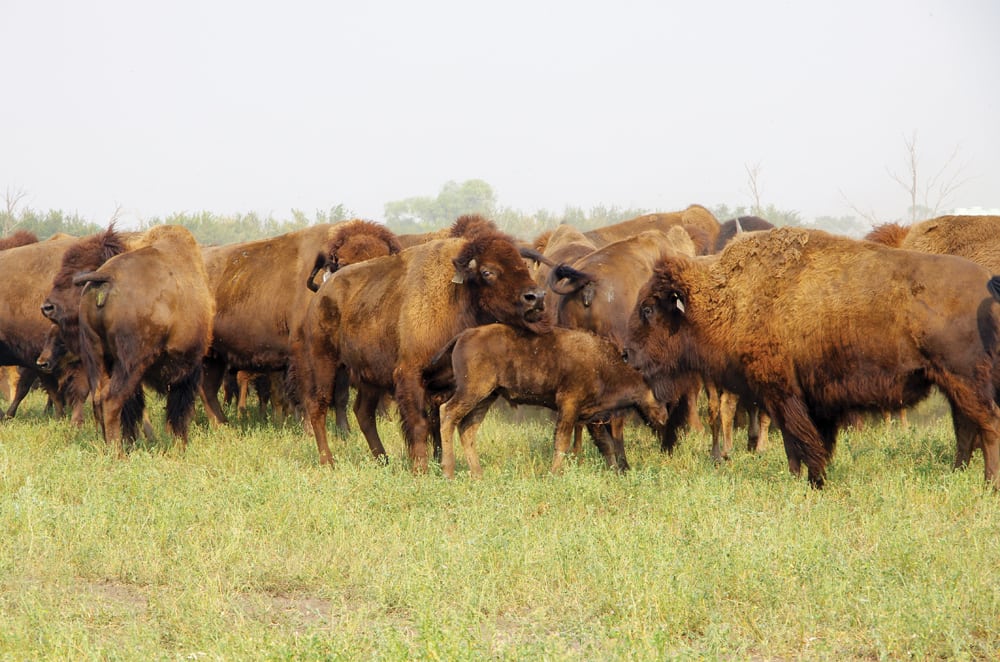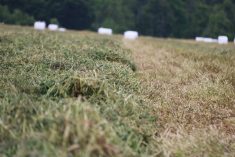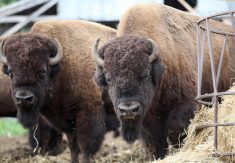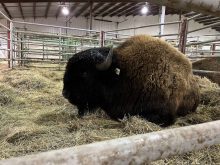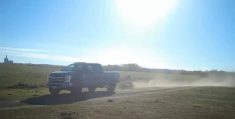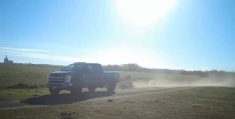Bison ranchers Brooks and Jen White of Lyleton, Man., are breaking their own ground on adaptive grazing, and they’re going right back to the system’s roots to do it.
It doesn’t take long to find bison mentioned on the many regenerative agriculture blogs, grazing websites and seminar advertisements currently floating through cyberspace.
After all, as many of those sources will argue, adaptive grazing systems take their cue from bison, and the massive herds that once ranged North America’s grasslands. The concept of a short, intense graze followed by long rest is the backbone of those systems, which advocates commonly cite for increased forage production, nutrient cycling, water infiltration, and a host of other benefits ranging up to, and including, carbon sequestration and a possible boon in the fight against climate change.
But ironically, adaptive systems have perhaps more commonly been adopted for cattle than the animal that is their original inspiration and, while the principles may be the same, the quirks of the breed may mean a second look at the logistics for a bison producer looking to jump on the adaptive grazing bandwagon.

Solving problems
The Whites have already navigated those hurdles on their southwestern Manitoba farm, Borderland Agriculture.
“I’ve tried this three times in the past and failed every time,” White said, pointing to his currently successful adaptive grazing system.
“It wasn’t saying that it wouldn’t work; it was trying to figure out what I had to do differently to make it work. It was getting away from the mentality of thinking that I had to do this with a single strand.”
- VIDEO: Challenges and rewards in Manitoba’s bison industry
- Bison farms stand to be counted
Read Also
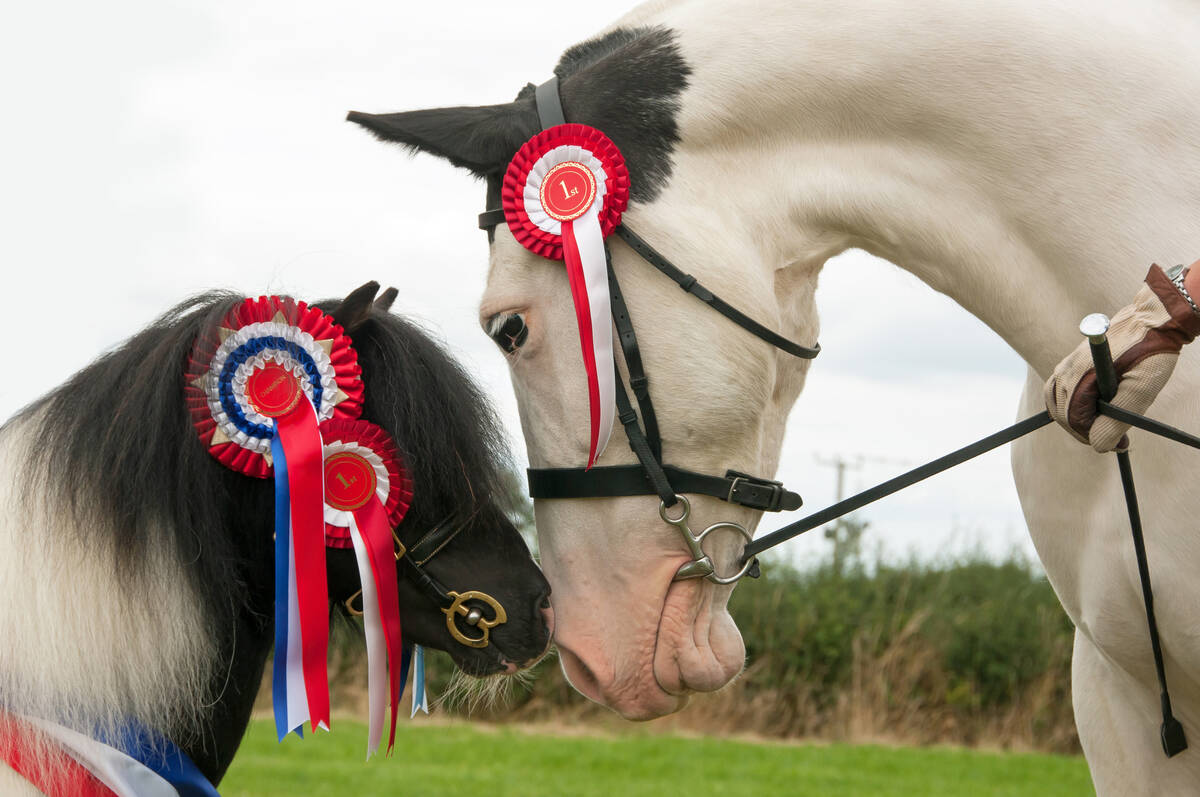
Linebreeding horses drives genetic bottlenecks
Too much linebreeding and prioritizing pedigree can narrow genetic diversity and lead to horse health problems in future generations.
The Whites were no strangers to rotational grazing, moving their herd through a series of paddocks every one to two weeks and embracing regenerative agriculture concepts like grazed cover crops. As the years passed, however, the promised pasture benefits of rotational grazing were still falling short. The pasture was still marginal and overgrazed, weed pressure was on the rise and water infiltration, something of prime concern to the farm after flood hit the area in 2011, was not improving as expected.
For Borderland Agriculture, a two-strand fence made the difference between failure and success, although White says the animals now respect the fence enough that he has moved back to a single strand. The Whites moved away from bare wire at first, opting for the more visible ribbon fence and then, later, wire decorated with metal cans to catch the eye.
Fenceline visibility is among Allen Williams’ bag of tricks. The well-known speaker and consultant on adaptive grazing is also a repeat instructor at grazing workshops in Manitoba and, during one such trip, consulted with Brooks White.
“The one thing that I talked to him about more than anything else was gaining control of the bison, over the grazing,” Williams said. “Brooks was obviously very leery of that and was concerned that he would be able to control his bison using electric fencing, polywire, anything like that, and that, under higher densities, how would they respond?”
In contrast, Williams argued, bison would fit well with higher stock density, given their tendency to group into tighter mobs than cattle.
Bison do tend to roam, he later said in an interview, and he normally advises producers to map paddocks half again to twice as large as they would for cattle.
“You have to be cognizant of animal behaviour and that’s very important with bison,” Williams said. “You want to be very cognizant of their flight zone, how to properly apply pressure to them and then when to back off. All of that is very important. Bison can turn rogue on you very quickly if you mishandle them and mistreat them. In moving bison on a day-to-day basis, you basically want them to do the movement. You don’t want to have to physically push or prod them to move. You want them to elicit the movement themselves through the stimulation of fresh forage in a new paddock.”
Brooks White agrees. In fact, he says, he tries to plan animal movement so that bison are not close to people. Instead, he might use the alley connecting paddocks to his watering area to move animals to the other side of the pasture while fence near their old grazing grounds is moved.
Training days
Bison are far from the most exotic animal that Williams has trained to a high-density system, a list that extends from beef and dairy cattle to pigs, sheep and alpacas.
Training is largely the same between those species, he said.
Williams typically uses a pasture with a high-quality perimeter electric fence. Within the fenceline, he set up a training paddock with a single strand of high-tensile wire (two strands for smaller species). Feed and water is set along the perimeter of the paddock, along with 16-foot lengths of polywire set perpendicular to the fence.
“If they’re walking the perimeter, they have to encounter these occasional 16-foot spans of electrified polywire and we’ll tie flagging, florescent flagging, onto the polywire at intervals so that it will flap in the breeze,” he said. “What happens is, a lot of times, they’ll initially run through the polywire. Well, not a problem, just put it right back up.”
Once livestock stop running through the strands, Williams bisects the paddock with livestock on one half. Once livestock stop breaking through the bisecting wire, they are trained to the system.
Problems with water
Water posed another hurdle. The Whites found themselves fighting the same herd instincts that were a boon in high stock intensity grazing, as the whole herd would move to its one water source, overloading the system.
White hoped to solve the problem with more training. He purposefully started his rotation close to the water so animals did not have to break from the herd, then gradually moved to farther paddocks.
“Ideally, we would move their water to their pastures, to their paddocks, so it was always in that paddock, but we’re just not there yet,” he said.
Williams says the problem is not uncommon across grazing species. He suggests producers restrict trough space to limit how many can drink. Eventually, he says, that will lead to animals “training,” or rotating to water in small groups.
The Whites’ mindset has already earned them accolades. This year, Brooks and Jen White were named Manitoba’s Outstanding Young Farmers, largely because of their focus on regenerative agriculture, including their integration of bison.
As part of the award, the couple said they hope to graze their bison 365 days a year, including grazed cover crops and crop stover along with perennial pasture.
Today, stock density at Borderland Agriculture is up to 60,000 pounds per acre, with animals moved daily through small paddocks.
It’s a number White still says he would like to raise, although the farm is still experimenting.
“I’ve been learning how high of a density can we get and still maintain the animals’ comfort, because they are still a wild animal and they have more of a flight zone,” he said. “We need to be safe and the animal needs to be safe when we’re doing this.”


